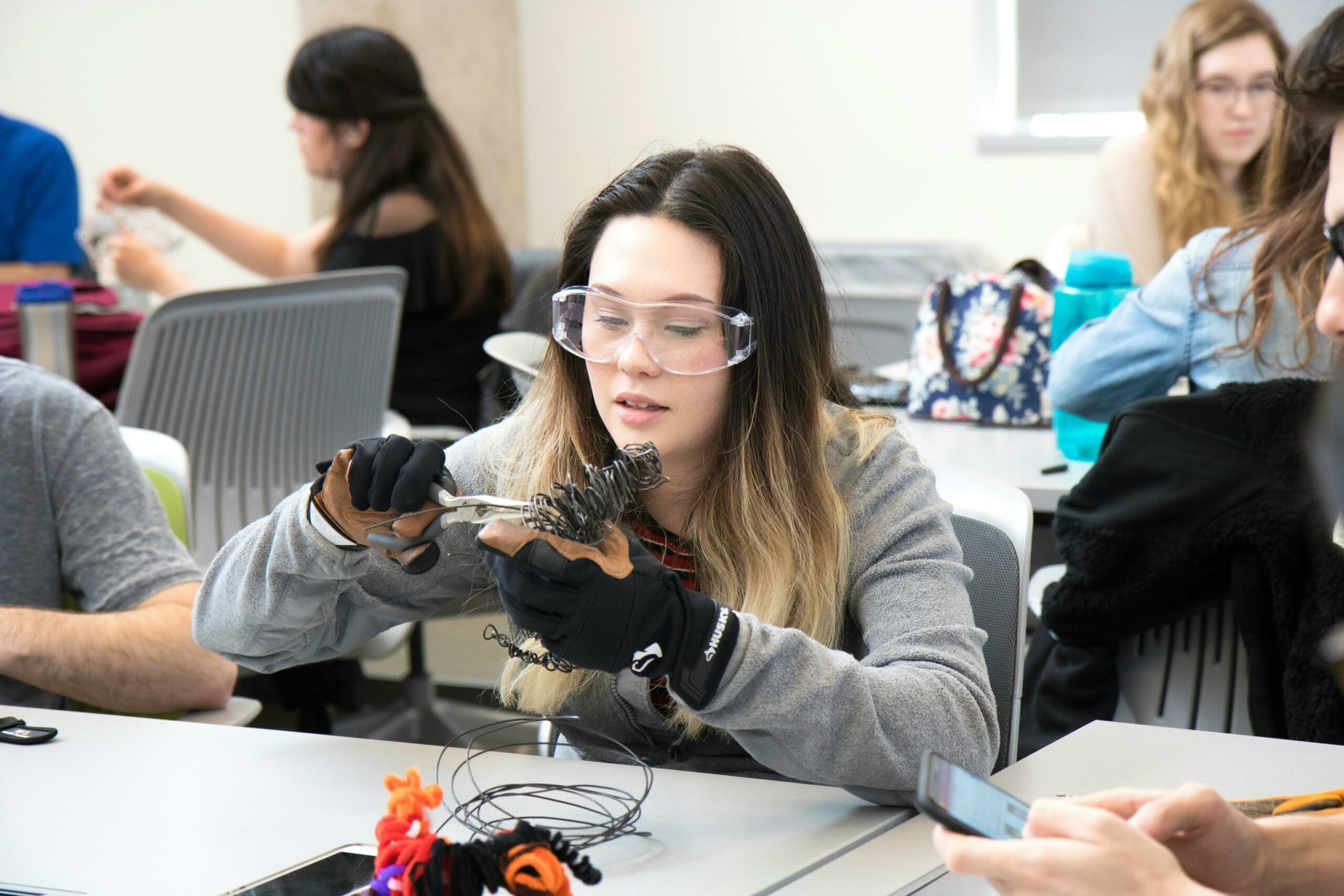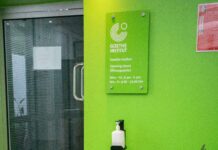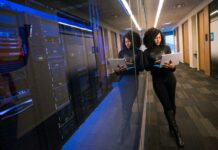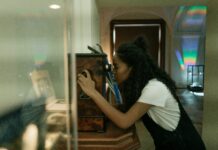Are you curious about where creativity meets cutting-edge innovation? Look no further than MIT Art Design and Technology University, a powerhouse of imagination and technological advancement. This unique institution stands at the crossroads of art, design, and technology education, offering students an unparalleled opportunity to explore their passions in ways that traditional universities simply can’t match. Imagine a place where artists become digital pioneers and designers harness the latest tech to transform ideas into reality. Isn’t that the dream for aspiring creatives and tech enthusiasts alike?
At MIT Art Design and Technology University, the curriculum blends artistic expression with technological mastery, preparing graduates for the fast-evolving digital landscape. From immersive virtual reality design courses to groundbreaking interactive media programs, students are constantly challenged to push the boundaries of what’s possible. Have you ever wondered how technology influences modern art or how design thinking can revolutionize user experience? This university answers those questions by fostering an environment that encourages experimentation and innovation.
In today’s world, where digital art and technology integration are booming industries, choosing the right university can make all the difference in your career trajectory. MIT’s unique approach to combining creative arts with STEM fields ensures graduates are not only skilled creators but also tech-savvy problem solvers. Whether you’re passionate about game design, UX/UI development, or digital storytelling, this institution is a launchpad for your dreams.
So, why settle for ordinary education when you can immerse yourself in a world where art meets technology in the most inspiring ways? Discover how MIT Art Design and Technology University is shaping the future of creative innovation and why it might just be the perfect fit for your ambitions. Ready to unlock your creative potential with the latest tech tools? The future starts here!
Discover How MIT Art Design and Technology University Fuels Creative Innovation in 2024
When it comes to the world of creativity and innovation, the MIT art design and technology university is kind of a big deal. I mean, not really sure why this matters, but people often confuse MIT with just being about science and engineering. Guess what? It’s so much more than that. The university actually have programs that combine art, design, and technology in ways that you don’t see every day. It’s like mixing peanut butter with jelly and expecting a gourmet sandwich, but it somehow works.
So, what exactly makes the MIT art design and technology university stand out? Let’s dive into some of the key features, without sounding like a boring brochure (because who wants that?).
Programs Offered
| Program Name | Duration | Focus Area | Unique Feature |
|---|---|---|---|
| Media Arts and Sciences | 4 years | Digital media, interactive art | Collaboration with tech startups |
| Design and Computation | 2 years | Computational design, AI | Hands-on projects with real clients |
| Art, Culture, and Technology | 3 years | Interdisciplinary art projects | International exchange programs |
Yeah, the names sound fancy, but what does it mean for you? Basically, you get to learn how to use tech tools to create art that nobody else thought was possible. Maybe it’s just me, but I feel like this blend prepares students not just for jobs but for creating stuff that could kinda change the world.
Facilities and Resources
MIT is known for its labs and workshops, but the art and design department takes it to another level. They have studios equipped with 3D printers, laser cutters, and VR setups – the kind of stuff that makes you feel like you’re living in the future. Oh, and don’t forget the digital fabrication lab, where you can prototype your wildest ideas.
Here’s a quick list of some cool resources:
- Advanced computer labs with software like Autodesk and Adobe Creative Suite
- Experimental media lab for sound, video, and interactive installations
- Access to MIT’s extensive digital library and archives
You might wonder, “Do I really need all these fancy tools?” Good question! The answer is: if you want to stand out, then yes. These resources allow students to experiment and fail in a safe environment, which is kinda important for creative growth.
Faculty and Industry Connections
One of the things that keep students buzzing about the MIT art design and technology university is the professors. They aren’t just academics; they’re practitioners who have been in the trenches of art and technology. You won’t get those boring lectures, instead you get real-world insights and mentorship.
Also, the university has partnerships with big names in tech and design industries. This means internships, project collaborations, and sometimes even job offers before you graduate. Sounds like a dream, right? Yeah, but remember, it’s still MIT – so the workload is no joke.
Student Projects and Innovation
Here’s where things get really interesting; students have come up with some pretty cool projects over the years. For example:
- A virtual reality experience that helps people with anxiety by simulating calming environments
- Interactive public art installations that respond to weather changes
- AI-driven design tools that assist artists in creating complex patterns
Maybe it’s just me, but I think these projects show how the MIT art design and technology university is more about pushing boundaries than just sticking to “normal” art courses.
Table: Example Student Project Insights
| Project Name | Technology Used | Impact/Outcome |
|———————————|———————–|———————————–|
| VR Calming Space | Virtual Reality (VR) | Helped reduce anxiety symptoms |
| Weather Reactive Sculpture | Sensors, Arduino | Engaged local community |
| AI Pattern Generator | Machine Learning | Streamlined artist workflow |
Admissions and Who Should Apply?
Getting into MIT is tough, no surprise there. But for the art and design tech programs, they look for something extra – creativity, passion, and a portfolio that tells a story. It’s not just about grades; they want people who can think outside the box (or maybe even throw the box away).
Some tips if you thinking about applying:
- Work on a diverse portfolio showcasing different mediums
- Highlight any tech skills you have, even if they’re self-taught
- Write a personal statement that shows your unique perspective on art and technology
- Don’t be afraid to show your flaws or weird ideas (seriously, they dig that)
So, if you’re the type who likes to mix code with canvas, or circuits with sculpture, then the MIT art design and technology university might just be your playground.
Practical Insights for Prospective Students
- Budget for materials:
Top 10 Cutting-Edge Programs at MIT Art Design and Technology University You Can’t Miss
When it comes to mit art design and technology university, there is a whole lot to unpack, and honestly, it can be kinda overwhelming. Like, why would anyone combine art, design, and technology in one place? Well, turns out, its a pretty clever mix. The university focus on blending creativity with technical know-hows, which sounds like a recipe for some really cool innovations. But sometimes, it feels like they throw everything at you at once and expect you to keep up. Not really sure why this matters, but the campus itself looks like a futuristic art piece, all sleek glass and weird angles that probably makes students feel like they are inside a sci-fi movie or something.
The programs offered at mit art design and technology university are diverse, ranging from digital media, interactive design, to computational arts. If you’re someone who hates being boxed into one category, this is the place for you. The curriculum is designed to push boundaries, although sometimes I feel like the professors throw jargon at you like confetti, and you’re just there trying to catch what makes sense. Here’s a quick table to give you a rough idea about the popular programs and their focus areas:
| Program Name | Focus Area | Duration | Notable Project Example |
|---|---|---|---|
| Digital Media Arts | Video, Animation, Graphic Design | 4 years | VR-based storytelling experience |
| Interactive Design | User Experience, Interface Design | 3 years | Mobile app for urban navigation |
| Computational Arts | Coding, Algorithmic Art | 4 years | AI-driven art installations |
| Technology and Innovation | Product Design, Prototyping | 2 years | Smart wearable tech |
One thing that really stands out is their emphasis on hands-on projects. You won’t just be sitting in a boring lecture hall, no sir! The students are constantly encouraged to prototype, collaborate, and basically turn their wild ideas into something tangible. Maybe it’s just me, but I feel like sometimes this approach can be a double-edged sword — you get to create awesome stuff but also might feel lost when the tech doesn’t work or the design looks like a toddler’s drawing.
Now, if you’re wondering about the tech side, the university boasts some serious equipment and software. From 3D printers that probably cost more than my car to high-end VR headsets, the tech arsenal is impressive. But beware, not everything is smooth sailing. There are rumors that sometimes the labs get overcrowded and you have to fight for a workstation like it’s a Black Friday sale. Here’s a quick list of the tech resources available (because who doesn’t love a list?):
- Advanced 3D printing labs
- Motion capture studios
- Virtual Reality and Augmented Reality setups
- High-performance computing clusters
- Collaborative maker spaces with CNC machines
One quirky thing about mit art design and technology university is their faculty. They are a mix of hardcore technologists, artists who swear by their paintbrushes, and designers who live on coffee and late nights. This creates a bit of a culture clash sometimes — imagine a coder and a painter arguing over the “right” way to create something. It’s kinda hilarious but also educational in its own messy way.
Financially speaking, let’s be honest, this kind of specialized education doesn’t come cheap. Tuition fees are on the higher end, and although there’s scholarships, grants, and work-study options, you might find yourself counting every penny. But if you’re dreaming about a career that blends creativity with tech, maybe its worth the investment. Here’s a quick snapshot of costs (approximate):
| Expense Type | Estimated Cost (per year) |
|---|---|
| Tuition and Fees | $45,000 |
| Housing and Meals | $15,000 |
| Books and Supplies | $2,000 |
| Miscellaneous Expenses | $3,000 |
Networking opportunities here are also pretty solid. Students get to interact with industry experts, attend workshops, and even participate in hackathons or art exhibitions. It’s a great way to build connections, although it can sometimes feel like a popularity contest, but hey, that’s college for ya.
In terms of career prospects, graduates from mit art design and technology university often land jobs in cutting-edge tech companies, creative agencies, or start their own ventures. The skill set they acquire is unique, combining analytical thinking with creative problem solving. Here is a practical insight sheet on common career paths and average salaries for graduates:
| Career Path | Typical Roles | Average Salary (USD) |
|---|---|---|
| UX/UI Designer | Interface Designer, UX Researcher | $80,000 – $110,000 |
Why Choose MIT Art Design and Technology University for Your Creative Career?
MIT Art Design and Technology University: A Crazy Mix of Creativity and Tech Nerdiness
So, you heard about MIT art design and technology university, right? If not, well, you’re in for a wild ride. This place is not your average college. It’s where art meets some serious tech stuff, creating a combo that’s kinda hard to put in words. I mean, imagine artists and engineers sharing the same space, arguing if a brush stroke is better than a code line or vice versa. Spoiler alert: it always ends in a huge debate with no winners.
What is MIT Art Design and Technology University all about?
Basically, this university focus on blending creative design with cutting-edge technology. The students don’t just learn how to paint or draw; they also get their hands dirty with programming, robotics, and digital fabrication. Sounds fancy, huh? But it’s real, not just some sci-fi dream. Here’s a quick rundown of what they offer (not a complete list, but you get the idea):
| Program Name | Description | Duration |
|---|---|---|
| Digital Media Arts | Mix of graphic design, animation, and coding | 4 years |
| Interactive Technology and Design | Creating apps, games, and interactive stuff | 4 years |
| Robotics and Creative Systems | Building robots with artistic flair | 4 years |
| Experimental Sound and Music Tech | Combining sound engineering with tech | 3 years |
You see, the school don’t just teach theory; they push students to build real projects, like apps or installations that you can actually see and touch. Maybe it’s just me, but I feel like this hands-on approach is way better than just reading boring books.
Why should you care about this university? (Not really sure why this matters, but…)
If you’re someone who hates the idea of choosing between being an artist or a tech geek, this university might be your dreamland. They literally say, “Why not both?” And honestly, it’s refreshing. Plus, they have some pretty cool labs and workshops with 3D printers, laser cutters, VR setups—you name it. It’s like a playground for anyone who loves making stuff.
Here’s a small list of what you might find on campus:
- VR and AR labs for immersive experience creation
- Fabrication workshops with CNC milling machines
- Sound studios with all the fancy gear
- Collaborative spaces for group brainstorming (with snacks, of course)
How do they make sure students get the best education?
Well, the professors aren’t just teachers; they’re also active researchers and industry pros. They bring real-world problems into the classroom and expect students to solve them. Sounds stressful, but it’s also motivating. Also, the university encourage students to work in teams, mixing different skills and backgrounds. That’s where the magic happens, or so they claim.
Here’s a quick chart showing the percentage of students by department (just to give you an idea):
| Department | Percentage of Students |
|---|---|
| Digital Media Arts | 35% |
| Interactive Technology & Design | 30% |
| Robotics and Creative Systems | 20% |
| Experimental Sound & Music Tech | 15% |
Honestly, it’s a pretty balanced crowd. You won’t feel like a fish out of water no matter what you pick.
Some practical insights if you thinking of applying
Okay, so if you’re considering applying to MIT art design and technology university, here are some quick tips I gathered (because who reads the official website fully anyway?):
- Portfolio is king. They want to see your creativity, not just good grades.
- Don’t be shy about showing your tech skills, even if you’re an artist.
- Be ready for some group projects that might drive you crazy, but teach you a lot.
- Learn some basic coding before you come. Trust me, it helps.
- Get used to a fast-paced environment where deadlines are like your new best frenemy.
Financial stuff? Yeah, it’s not cheap, but they offer scholarships and assistantships. So, don’t lose hope if your wallet feels empty.
A sneak peek into student life
Student life here is kinda unique because you’re surrounded by people who are passionate about both art and tech. There’s always some event happening like hackathons, art exhibitions, or workshops. Some students even start their own projects or startups while still studying. Imagine juggling finals and a business idea at the same time. Not easy, but hey, who said university should be easy?
Here’s a rough weekly schedule of a typical student (note: this totally varies, but it gives you a vibe):
| Day | Morning | Afternoon | Evening |
|---|---|---|---|
| Monday |
Unlocking the Secrets Behind MIT Art Design and Technology University’s Innovation Labs
If you ever hear about mit art design and technology university, you probably think about some super high-tech place where robots and artists collide or something like that. Well, in a way, you’re kinda right. This university is not your typical school where everyone just sit in classrooms and scribble notes. Nope, it’s a place where creativity and technology mashup in ways you didn’t think was possible.
Let me tell you, the campus vibe is something else. Imagine walking through halls filled with students who are either sketching futuristic gadgets or programming AI to paint masterpieces. Sounds cool, right? But sometimes, I wonder if all this blending of art and tech makes the students lose focus on one thing. Maybe it’s just me, but I feel like sometimes you can’t be a master of both worlds at the same time.
Anyway, here’s a little breakdown on what makes mit art design and technology university standing out. I threw together a table to make things easier to digest:
| Feature | Description | Why it matters (or maybe not) |
|---|---|---|
| Interdisciplinary Courses | Combines art, design, and technology subjects | Helps students think in multiple dimensions. Or confuses them, who knows? |
| State-of-the-Art Labs | Robotics, VR, AR, and 3D printing facilities | Fancy tech to play with, but sometimes feels like a sci-fi movie set. |
| Collaborative Projects | Students work on real-world problems together | Teamwork makes the dream work, or just a headache? |
| Industry Partnerships | Links with tech giants and creative studios | Networking opportunities, or just more pressure to perform. |
Not really sure why this matters, but the university also emphasizes hands-on learning. It’s not just about reading textbooks or watching boring lectures. You get to build stuff, break stuff, and then build it again better. Kinda like that “trial and error” thing your science teacher always told you about but never really explained well.
Now, let me tell you about some courses that are offered—because listing is fun and it gives you a better picture, right?
- Digital Fabrication and Prototyping
- Interactive Media Design
- Computational Art
- Human-Computer Interaction
- Sustainable Design Technologies
Each course is designed to push you out of your comfort zone. Like, you might think you know how to draw, but when you have to code a digital sculpture, things get tricky. Or maybe you are a tech geek and suddenly need to think like an artist, which is a whole different ball game.
Students at mit art design and technology university also get the chance to participate in various exhibitions and tech fairs. These events showcase their projects, which ranges from interactive installations to innovative apps and even wearable tech that looks kinda futuristic but also kinda ridiculous. The creativity is off the charts, but sometimes you wonder if practicality is thrown out the window.
I bet you are curious about the faculty too. Well, it’s a mixed bag of professors and industry professionals who are experts in their fields. From painters who learned to use software to coders who discovered their love for sculpture, the teaching staff is as diverse as the student body. Sometimes, this mix leads to some pretty intense debates in class, which is both exhausting and exciting.
Here’s a quick peek into the daily schedule of a typical student, because schedules might be boring but can help you imagine the real deal:
| Time | Activity | Notes |
|---|---|---|
| 9:00 AM | Studio Workshop | Get hands dirty with projects |
| 11:00 AM | Lecture on Computational Art | Try not to fall asleep |
| 1:00 PM | Lunch with peers | Gossip and food, important stuff |
| 2:00 PM | Collaborative Project Meeting | Sometimes fun, sometimes not |
| 4:00 PM | Lab Session | Tech toys galore |
| 6:00 PM | Free time or Club Activities | Chill or get involved |
Not gonna lie, the workload can be intense. Balancing coding assignments with art critiques is not for the faint-hearted. But hey, if you love both worlds, it’s probably worth the sweat and tears.
One more thing that makes mit art design and technology university kinda unique is its approach to sustainability. Yeah, you heard me right—sustainability in tech and art. They push students to think about how their creations impact the planet. From eco-friendly materials for sculptures to energy-efficient algorithms, it’s all about making the future brighter and greener. Whether it’s actually effective? Well, that’s a debate for another day.
Oh, and before I forget, the university also has a pretty cool startup incubator program. Students who got wild
How MIT Art Design and Technology University Integrates Art, Design, and Technology Seamlessly
When you first hear about mit art design and technology university, you might think it’s just another fancy school with big brains and expensive coffee, but it’s more than that, trust me. This place got a reputation for blending art, technology, and design in a way that few other universities do. Like, it’s not just about painting or coding, it’s about creating something that actually makes sense in the real world—or at least, that’s what they say.
So, what’s the deal with mit art design and technology university anyway? It’s located in Cambridge, Massachusetts, which is kinda cool because it sits next to MIT, the famous tech school, but it’s its own beast. The university offers programs that combines the creative arts with cutting-edge technology. You got degrees in digital media, product design, interactive arts, and all kinds of stuff that sound like they belong in a sci-fi movie.
What Makes This University Different?
| Feature | Description |
|---|---|
| Interdisciplinary Approach | Students learn both artistic skills and technical skills, not just one or the other. |
| Industry Connections | There are tons of partnerships with tech companies and design firms, so internships are aplenty. |
| State-of-the-Art Facilities | Labs with 3D printers, VR setups, and even robotics workshops. |
| Focus on Innovation | Encourages students to push boundaries and experiment with new tech and art forms. |
But honestly, it’s not all sunshine and rainbows. Some students complain the workload is pretty intense—like, you’re expected to code a video game one day and paint a surreal portrait the next. Not really sure why this matters, but it definitely keeps you on your toes.
Programs Offered at mit art design and technology university
Here’s a quick list of some of the main programs you can find there:
- Bachelor of Fine Arts in Digital Media
- Master of Science in Product Design and Innovation
- Bachelor of Science in Interactive Technology
- PhD in Art, Design, and Technology Studies
Maybe it’s just me, but I feel like having a PhD in something that mixes art and technology sounds like a mouthful, but probably super cool. The students usually work on projects that combines coding, visual arts, and design thinking—that’s a skill set employers apparently drool over.
Why Choose This University?
- The faculty are experts who have worked in top tech companies and art studios.
- You get to use high-end equipment that most schools can only dream about.
- Collaborative environment that blends creativity with logic.
- Location near Boston tech hub means networking is easier than ever.
| Pros | Cons |
|---|---|
| Cutting-edge technology access | Heavy workload can be overwhelming for some students |
| Strong alumni network | Tuition fees are on the higher side |
| Diverse and inclusive community | Sometimes projects require both art and tech knowledge, which is tricky |
Oh, and here’s something funny: they have this thing called the “Innovation Lab,” where you can literally build robots or VR experiences. It sounds fancy, but sometimes it’s just a big workshop with wires everywhere and people arguing over whose design looks cooler. Typical university stuff, right?
Practical Insights for Prospective Students
If you thinking about applying, here’s some stuff you might wanna know before diving in:
- Portfolio is key: They want to see your creative work, but also any technical projects you’ve done.
- Be ready to collaborate: Group projects are a big deal here, and they expect you to merge different skill sets.
- Prepare for a fast pace: The curriculum moves quickly, and you’ll have deadlines that sometimes feel impossible.
- Funding options exist: Scholarships and assistantships are available, but you gotta apply early.
| Tip | Explanation |
|---|---|
| Develop both art and coding | Balance your skills in both areas because the courses overlap a lot. |
| Network early | Connect with professors and industry professionals from day one. |
| Stay organized | With so many projects, good time management is a must. |
The campus vibe is pretty chill, but don’t let that fool you, the pressure to innovate is real. Sometimes, students pull all-nighters mixing software with sketches just to meet the project deadlines. Again, not really sure why this matters, but surviving here kind of feels like an art form itself.
Final Thoughts on mit art design and technology university
If you wanna be part of a community where art meets the latest tech and you’re not afraid of a little chaos, this university might be your jam. But if you like things neat and tidy, maybe look elsewhere—or at least bring a lot of coffee. The blend of creative freedom and technical rigor can be a roller
The Role of MIT Art Design and Technology University in Shaping Future Creative Leaders
When you hear about MIT art design and technology university, what comes to your mind? Is it just a place where brainy people gather to invent stuff? Or maybe it’s more like a playground for creative souls mixed with hardcore tech geeks? Honestly, it’s a bit of both, but sometimes it feels like trying to solve a Rubik’s cube blindfolded.
So, let’s start with a quick overview that might help you get the idea — or maybe confuse you more, who knows? MIT, the Massachusetts Institute of Technology, is famous for engineering and sciences, right? But in the last decades, they’ve been seriously ramping up their game in art, design, and technology. Not really sure why this matters, but apparently, combining art with tech is the future, or so they say.
Here is a simple table showing some of the key areas where MIT art design and technology university focuses:
| Field | Description | Example Projects |
|---|---|---|
| Media Arts and Sciences | Blending digital media with interactive tech | Virtual reality experiences, Digital storytelling |
| Architecture | Design of physical and digital spaces | Sustainable buildings, Smart homes |
| Computational Design | Using algorithms and coding for design | Generative art, Algorithmic fashion |
| Human-Computer Interaction | Making tech user-friendly and intuitive | Gesture control, Wearable devices |
You might think that’s a lot to cover, and you’d be right! It’s like mixing a painter’s palette with a programmer’s code editor — messy but somehow works.
Now, about the students and faculty. They come from all over the world, bringing in a crazy mix of skills and backgrounds. Some of them are artists who barely know how to use a computer, and others are coders who can’t draw a stick figure. But the magic happens when they work together, even if sometimes it feels like herding cats. Professors push students to break boundaries, which sounds cool but also means you spend a lot of time questioning your life choices.
Here’s a quick list of popular courses you might want to check out if you’re thinking about MIT art design and technology university:
- Media Arts and Sciences Fundamentals
- Design and Computation
- Interactive Electronics
- Digital Fabrication and Prototyping
- Computational Photography
Each course combines theoretical classes with hands-on projects. For example, in Interactive Electronics, you don’t just learn about circuits; you build your own weird gadgets that may or may not work as planned. Sometimes you end up with a robot that dances, sometimes with a toaster that burns your bread — both equally valuable learning experiences, apparently.
One thing that’s kinda cool about this university is their labs and facilities. They got everything from 3D printers that look like they belong in a sci-fi movie, to VR rooms where you can walk around virtual worlds. Not sure why, but I always thought 3D printers would be huge and ugly, but these are surprisingly sleek. It’s like the future sneaked into a classroom.
Check out this basic sheet on facilities available:
| Facility | Description | What You Can Do |
|---|---|---|
| MIT Media Lab | A hub for media arts, tech innovation, and experiments | Develop AR apps, Interactive installations |
| MakerWorkshop | Space for digital fabrication and prototyping | 3D printing, Laser cutting |
| Design Studio | Collaborative space for visual and product design | Sketching, Model building |
| VR Lab | Virtual reality development and testing | Immersive experiences |
Oh, and did I mention the collaboration with industries? It’s kinda insane. Big companies like Google, Apple, and even startups working on funky ideas all wanna get involved. That means students sometimes get the chance to intern or work on projects that might actually change the world — or at least make a cool app.
Maybe it’s just me, but I feel like the blend of creativity and technology at MIT art design and technology university is a bit like mixing oil and water, yet somehow it sticks. The projects students come up with are so wild that you wonder if they’re from this planet or just really good at daydreaming.
Here’s a practical insight list for anyone considering applying:
- Be ready to juggle both art and tech — it’s not just painting or coding, it’s both.
- Expect to fail a lot — prototypes rarely work on the first try.
- Collaboration is key — get comfy working with people who think totally different than you.
- Keep an open mind for weird ideas — sometimes the craziest concepts turn out to be gold.
- Learn how to explain your work — it’s not enough to be creative, you gotta sell it too.
Honestly, if you’re looking for a place that’s
Exploring MIT Art Design and Technology University’s Impact on Digital Art and Design Trends
When you hear about mit art design and technology university, what pops into your mind? For me, it’s kinda this wild mix of creativity and hardcore tech stuff mashed together, which honestly, sounds both exciting and a little bit confusing. Like, how do people even manage to balance art and technology without losing their minds? Anyway, MIT’s approach to this combo is pretty fascinating, if you ask me.
So, let’s start with the basics — MIT isn’t just about rocket science or coding all day. Nope, they got a whole department dedicated to blending creative design with technological innovation. The mit art design and technology university programs cover everything from digital media to interactive design, which means you’re not just drawing pretty pictures but also making stuff that actually moves or responds to you. Kinda cool, right?
If you’re curious, here’s a quick snapshot of what you might study there:
| Course Name | Focus Area | Duration | Perks |
|---|---|---|---|
| Interactive Media Design | User experience, VR, AR | 4 years | Hands-on projects, internships |
| Computational Design | Algorithms in art | 2 years | Research, tech art fusion |
| Digital Fabrication | 3D printing, prototyping | 1-2 years | Access to cutting-edge labs |
Not really sure why this matters, but the faculty at mit art design and technology university are these weirdly talented folks who come from all sorts of backgrounds. You got artists who learned coding, and tech geeks who suddenly got obsessed with painting. It’s like a mash-up band, but for education. And honestly, this diverse mix probably fuels the innovation they brag about so much.
One thing that gets me scratching my head is how they manage to keep the tech side from overpowering the art. Because sometimes, tech stuff can be a bit dry or too complex, and art is supposed to be emotional and free, right? Maybe it’s just me, but I feel like there’s a fine line between making tech a tool for art and letting it take over the entire canvas.
Here’s a list of some cool projects students have done at mit art design and technology university recently:
- A wearable device that changes color based on your mood (yes, seriously).
- An AI-powered art critic that writes poems about paintings.
- A virtual reality installation that lets you walk through a digital forest made of sound.
The university also provides some unique facilities for these projects. Check out the table below for some of the tech toys students get to play with:
| Facility Name | Description | Available To |
|---|---|---|
| Media Lab | Experimental tech and media research | All students |
| Fabrication Studio | 3D printers and laser cutters | Design and tech majors |
| Virtual Reality Suite | High-end VR equipment | Selected courses |
Now, I gotta say, the vibe at mit art design and technology university is probably not what you expect from MIT’s usual “brainiac” stereotype. It’s got this laid-back, artsy feel with a sprinkle of geekiness. You’ll see folks covered in paint stains next to people in hoodies sporting VR goggles. It’s kinda like a techie art festival all year round.
Here’s something practical if you’re considering applying. The admission process isn’t just about your grades or test scores. Nope, they care a lot about your portfolio and how you think outside the box. So forget about just being book-smart; they want to see if your brain can do some funky stuff with both pixels and code.
Some tips for applicants to mit art design and technology university:
- Showcase projects that mix tech and creativity.
- Explain your thought process, not just the final product.
- Don’t be afraid to show imperfections — sometimes that’s where the magic lies.
Oh, and tuition? Yeah, it’s MIT, so it ain’t cheap. But they do offer scholarships and financial aid, especially for students who bring diverse perspectives and innovative ideas. Not really sure why this matters, but sometimes the best ideas come from the most unexpected places — maybe that’s their secret sauce.
Before I forget, the university also hosts plenty of workshops and guest lectures from industry pros. So if you wanna rub shoulders with the people who’re shaping the future of design and tech, this place might just be your playground.
Quick pro tip: If you want to survive the workload, get comfy with both coding languages and sketchpads. You’ll be juggling algorithms and aesthetics like a pro, or at least trying to.
To wrap up (or not, because I promised no conclusion), the mit art design and technology university is kinda like the place where the future meets creativity, but with a little bit of chaos sprinkled on top
Step-by-Step Guide to Applying at MIT Art Design and Technology University in 2024
When you hear about the MIT art design and technology university, you probably think of some fancy tech labs with robots and artists throwing paint on canvases, right? Well, kinda yes, kinda no. This place is seriously a mashup of creativity and hardcore tech, which sounds cool but also confusing sometimes. Not really sure why this matters, but it’s like they want you to be a coder and a Picasso all in one — talk about pressure!
Anyway, MIT’s approach to art, design, and technology is unique. They mix these fields so much that sometimes you wonder if you are in an art class or a computer science lecture. Spoiler alert: it’s both. Here’s a quick breakdown of what they offer (or at least what I gathered from their website which was kinda hard to navigate, no offense):
| Department | Focus Area | Cool Stuff You Might Learn |
|---|---|---|
| Media Arts & Sciences | Digital Media, Interactive Tech | Coding for art installations, VR |
| Architecture & Design | Building Design, Urban Planning | Sustainable design, 3D modeling |
| Comparative Media Studies | Film, Game Design | Storytelling, game mechanics |
So, the MIT art design and technology university doesn’t just hand you a brush or a keyboard; it tries to combine these tools to create something new. Maybe it’s just me, but I feel like this combo is what the future of education should be about.
Now, let’s talk about the student experience because that’s what everyone really wants to know, right? From what I heard, the workload can be brutal. Imagine having to design a sculpture that reacts to people’s emotions, and also write a 20-page code for it. Yeah, sounds like a nightmare for sleep lovers. But, on the bright side, you get to work with some of the smartest and weirdest people you’ll ever meet. And weird here is a compliment, trust me.
Here’s a little list of skills you might pick up if you decide to dive into MIT’s art and tech world:
- Programming languages (Python, JavaScript, etc.)
- 3D printing and fabrication techniques
- Graphic design principles
- Interactive media development
- Critical thinking about technology’s impact on society
Not sure if you noticed, but many of these skills overlap with both art and tech. It’s like they want you to be a jack-of-all-trades, master of some? Honestly, it’s a bit overwhelming but also pretty exciting.
One thing that people often overlook when they talk about MIT art design and technology university is the emphasis on collaboration. You’re not just working alone, you’re constantly bouncing ideas off engineers, artists, and even philosophers sometimes. It’s kinda like a big, messy brainstorm session that never really ends. Here’s a rough example of a project workflow at MIT:
- Idea Generation: Brainstorm with peers from different disciplines.
- Prototype Development: Use digital tools and physical materials.
- Testing & Feedback: Present to community or faculty, gather input.
- Iteration: Refine based on feedback, repeat steps 2-4 as needed.
- Final Presentation: Showcase the work in exhibitions or conferences.
If you are a person who thrives in chaos, this might be your paradise. But if you like clear instructions and no surprises, then brace yourself.
Oh, and the facilities! MIT doesn’t just give you a classroom, they throw you into labs with 3D printers, laser cutters, and sometimes even robots that could help you build stuff. It’s like a playground for adults who never grew up. Here’s a small peek at what you’ll find:
| Facility | Equipment/Resource | Purpose |
|---|---|---|
| Fabrication Lab | 3D Printers, Laser Cutters | Creating prototypes, models |
| Media Lab | VR Headsets, High-end Cameras | Immersive media experiences |
| Design Studio | Drawing Tools, Digital Tablets | Concept sketches, graphic design |
Not really sure why this matters, but having access to these tools can totally change how you work and learn.
Let’s not forget about the professors – some of them are straight-up legends in their fields. They don’t just teach, they also do crazy research that could blow your mind. For example, some faculty members are working on AI that can create art, or sustainable materials that change color based on temperature. Sounds sci-fi? It is. But it’s happening right there.
If you thinking about applying, here’s a quick checklist of what might help:
- Portfolio showing your best art or design work
- Coding projects or tech-related creations
- Personal statement explaining why you want to mix art and tech (try not to sound too cliché)
- Letters of recommendation from people who
Exclusive Insights: Student Success Stories from MIT Art Design and Technology University
When you hear “MIT Art Design and Technology University,” the first thing that pop in your head might be, well, MIT, right? But hold on, it’s not just about rocket scientists and engineers banging away on codes. Nope, this place is actually a melting pot of creativity, tech, and design all rolled into one. Maybe it’s just me, but I feel like people don’t talk enough about how art and tech can actually be BFFs in modern education. So, let’s dive into what makes the MIT Art Design and Technology University a kinda unique beast in the world of higher ed.
First off, the curriculum here isn’t your run-of-the-mill “paint a picture” or “write some code” kind of deal. They blend the two in ways that sometimes make you go “wait, what?” For example, you might have a class where you learn about interactive installations one day, and the next, you’re coding AI that can generate art. Sounds wild, right? Not really sure why this matters, but the university really pushes the boundaries between disciplines that are usually kept apart like oil and water.
Here’s a quick look at some of the programs they offer:
| Program Name | Focus Area | Unique Feature |
|---|---|---|
| Digital Media Arts | Animation, VR, and digital storytelling | Hands-on projects with industry partners |
| Interactive Design & Technology | UX/UI design, human-computer interaction | Collaborative lab spaces |
| Computational Art | Generative art, AI-driven creativity | Access to supercomputing resources |
| Product Design & Innovation | Sustainable design, prototyping | Real-world startup incubator support |
Isn’t that a cool spread? What’s interesting is how they don’t just teach you to make pretty pictures or slick apps. Instead, it’s all about solving real problems through design and technology. For instance, their Product Design & Innovation program encourages students to create eco-friendly products. Maybe it’s just me, but I think that’s pretty forward-thinking, especially in today’s climate crisis.
Oh, and speaking of climate, guess what? The campus itself is a showcase of sustainable architecture and green tech. Like, they have solar panels on pretty much every building and even rainwater harvesting systems that supply water to their gardens. Not many universities can boast that kind of eco-cred, so it’s kinda impressive.
If you’re wondering about the hands-on experience, here’s a peek at their labs and maker spaces:
- The Media Lab: A hub for experimental projects combining AI, robotics, and art.
- The Design Studio: Where ideas get sketched, prototyped, and sometimes smashed (because not every idea works, duh).
- The Fabrication Lab: Full of 3D printers, laser cutters, and tools that make your DIY dreams come true.
- Virtual Reality Lab: For those who want to create immersive experiences — it’s like stepping into the future, literally.
Now, let me be honest, this place isn’t for everyone. The workload can be brutal, and the professors expect you to think outside the box — sometimes outta the entire building, if you catch my drift. But if you’re the kind who loves to tinker, experiment, and maybe fail a few times before nailing it, then the MIT Art Design and Technology University might just be your playground.
Below is a comparison table showing how this university stacks up against other tech-art schools:
| Feature | MIT Art Design and Technology University | Other Tech-Art Schools |
|---|---|---|
| Interdisciplinary Curriculum | Very integrated | Usually separated disciplines |
| Access to Cutting-Edge Tech | Extensive | Limited or specialized |
| Industry Collaboration | Strong partnerships | Varies widely |
| Sustainability Focus | High | Often secondary |
| Campus Facilities | State-of-the-art labs and maker spaces | Good but less comprehensive |
Okay, so maybe you’re thinking, “Sounds great, but what about career prospects?” Well, the good news is that graduates from MIT Art Design and Technology University tend to land jobs in a variety of fields: from UX design at big tech companies, to creative director roles at startups, or even launching their own businesses. The university’s strong industry ties definitely help with that, plus the portfolio you build here is usually top-notch.
One more thing that deserves a mention is the student community. It’s a vibrant mix of artists, coders, designers, and tech geeks who sometimes argue (friendly, mostly) about which is better: a perfectly crafted code or a stunning visual. Spoiler alert: no one really wins that debate. But this diversity makes for a lively campus vibe, if you’re into that sort of thing.
Here’s a rough
How MIT Art Design and Technology University Drives Innovation Through Collaborative Projects
When it comes to mit art design and technology university, there’s just so much to unpack that you might wonder where do I even begin? Honestly, it feels like a rabbit hole that never ends, but hey, who don’t love a good challenge, right? This place is not only about the usual techie stuff, but it also mixes art and design in ways that makes you scratch your head sometimes. Like, why would a technology university care so much about abstract art? Well, turns out, it matters more than you’d think.
Let’s start with a quick overview of mit art design and technology university’s program structure. They got this blend of courses that are supposed to make students think outside the box (or cube, if you want to be literal). The curriculum looks something like this:
| Semester | Focus Area | Key Subjects | Practical Components |
|---|---|---|---|
| 1 | Fundamentals of Art and Design | Drawing, Color Theory, Introduction to Tech | Sketch Projects, Lab Sessions |
| 2 | Technology Integration | Coding Basics, Digital Media, UX Principles | App Development, Group Work |
| 3 | Advanced Interdisciplinary Study | AI in Art, Interactive Design, Robotics | Prototyping, Workshops |
| 4 | Capstone Project | Personalized Project, Thesis | Exhibition, Real-world Client |
Not really sure why this matters, but the way the semesters are laid out makes it clear that they’re aiming for students to become jacks-of-all-trades. Some people might say that’s too broad, but others will call it versatile. Meh, maybe it just depends on your taste.
Now, speaking of taste, the campus life at mit art design and technology university is something else. It’s not your typical tech university vibe where everyone wears hoodies and stares at their laptops all day. No sir, here you’ll find painters chatting with coders, designers brainstorming with engineers. It’s like a weird but wonderful melting pot. And the clubs? Oh boy, they got everything from AI art collectives to vintage camera enthusiasts. Honestly, it feels like a hipster paradise sometimes, but in a good way.
A quick list of some popular student clubs:
- Digital Art Society
- Robotics and Design Club
- Sustainable Tech Innovators
- VR and Game Development Group
- Historical Art Preservation Team
Each club brings something unique, which probably helps students to find their niche or just try something wild and new. If you asked me, joining a couple of these clubs is probably one of the best ways to survive and thrive there.
Another thing that might surprise you about mit art design and technology university is their focus on real-world applications. I mean, they really push students to build stuff that could actually change the world (or at least their neighborhood). Not just theory and lectures, but hands-on projects like creating sustainable wearable tech or designing interactive installations for public spaces.
Here’s a little practical insight table to get a feel of what students work on in real life:
| Project Type | Description | Skills Developed | Impact |
|---|---|---|---|
| Wearable Tech | Smart clothing with embedded sensors | Electronics, Textile Design | Health monitoring, Fashion innovation |
| Interactive Installations | Art pieces that respond to audience interaction | Coding, Design Thinking | Community engagement |
| Sustainable Design | Eco-friendly product prototypes | Material Science, Prototyping | Environmental awareness |
| AI-driven Artworks | Using machine learning to create art | AI, Data Analysis, Creativity | New artistic expressions |
Maybe it’s just me, but I feel like this approach is way cooler than just sitting in a classroom memorizing formulas. Also, you can’t deny that working on something tangible is way more satisfying.
Oh, and did I mention the faculty? The professors at mit art design and technology university are a mixed bag of geniuses and eccentrics. Some are world-renowned artists who can’t stop talking about color palettes, others are tech gurus who might forget your name but remember every code snippet. It’s a bit chaotic, but somehow it works. You might get a lecture full of jargon one day, and the next, a workshop on how to paint with virtual reality. Talk about variety!
To break it down a little, here’s a quick “faculty type” chart:
| Faculty Type | Background | Teaching Style | Student Feedback |
|---|---|---|---|
| The Artist | Professional Painter/Designer | Hands-on, expressive | Inspiring but sometimes abstract |
| The Engineer | Computer Science/Robotics | Methodical, precise | Strict but knowledgeable |
| The Innov |
7 Game-Changing Technologies Developed at MIT Art Design and Technology University
When you hear the name MIT Art Design and Technology University, you probably thinks about some super high-tech place where creativity and science collide in some crazy way. And honestly, you wouldn’t be totally wrong. This university is kinda unique because it combines three big worlds: art, design, and technology. Not really sure why this matters, but somehow they makes it work, and students gets a chance to explore all kind of cool stuff that you don’t usually see in other colleges.
So what is this mit art design and technology university all about? Well, it’s not just MIT, but a special branch or program focusing on the arts and technology. You could say it’s like a playground for people who loves to make things that are both beautiful and smart. From digital art, graphic design, to coding and robotics, the courses here covers a wide range of topics that would probably confuse your average person.
Let’s break down some of the main parts of the university’s offerings, because there’s a lot to digest:
| Department | Key Focus | Example Courses |
|---|---|---|
| Art | Traditional & digital arts | Painting, Sculpture, Digital Illustration |
| Design | Visual communication, UX/UI | Graphic Design, User Experience Design |
| Technology | Computer science, Engineering | Programming, Robotics, AI |
Now, maybe it’s just me, but I feel like this table doesn’t even scratch the surface. The real magic happens when students combines these areas to build some kinda hybrid projects. Like, imagine designing a sculpture that can react to people’s movements using sensors or creating an app that turns your doodles into actual music. That’s the kinda stuff they encourages here.
One of the coolest, yet kinda confusing things about mit art design and technology university is how interdisciplinary everything is. You have to be ready to wear many hats — artist, engineer, coder, and sometimes even a philosopher if you’re debating about technology’s impact on society. It’s not always easy though; some students complains that it’s like being pulled in too many directions at once. But on the flip side, it prepares you for real-world problem solving better than many traditional programs.
Here’s a quick pros and cons list, because who doesn’t love those?
Pros:
- Access to cutting edge technology and tools
- Collaboration with peers from diverse backgrounds
- Strong emphasis on creativity and innovation
- Opportunities for internships at tech and design companies
Cons:
- Workload can be overwhelming at times
- Not much focus on theory, which some might miss
- Requires a broad skill set, not suited for specialists only
Another thing that makes this university stand out is their crazy labs and maker spaces. They have everything from 3D printers to VR studios, so students gets hands-on experience. If you ever wanted to build your own gadgets or artworks that move and respond, this is the place to be. I mean, you don’t see that everyday, right?
Here’s a quick list of some popular tools and resources available at mit art design and technology university:
- 3D Printers and Laser Cutters
- Virtual Reality (VR) and Augmented Reality (AR) Labs
- Motion Capture Studios
- Robotics Workshops
- Digital Fabrication Labs
Some might argue that this university is a bit too niche or specialized, but hey, that’s what makes it cool. It’s designed for people who refuses to be boxed into just “artist” or “engineer” categories. If you’re the kind of person who likes to experiment and doesn’t mind making mistakes (lots of them), this place might just be your wonderland.
To get a better understanding of how the curriculum is structured, here’s a simplified semester breakdown for a typical student:
| Semester | Focus | Sample Projects |
|---|---|---|
| 1 | Foundations in Art and Technology | Basic Drawing, Intro to Coding |
| 2 | Intermediate Design & Programming | UX/UI Design, Interactive Media |
| 3 | Specialized Electives | Robotics, Digital Animation |
| 4 | Capstone Project | Collaborative Installation, Smart App |
Not sure if this helps, but the capstone project is usually the big deal at the end where students shows off everything they learned by creating something that mashed up art, design, and tech in one package. Sometimes it’s kinda wild, like a light installation that reacts to sound or a game that teaches history in a whole new way.
Financially, attending mit art design and technology university might not be the cheapest option out there. Tuition fees are kinda on the higher side, but they do offer scholarships and financial aid for those who qualifies. Also, the potential for landing internships or jobs after graduation is pretty high, so many students consider it an investment
What Makes MIT Art Design and Technology University a Hub for Creative Technologists?
If you ever wonder about mit art design and technology university, you’re not alone. I mean, it’s kinda a mouthful, and sometimes I think these fancy names are just made to confuse us regular folks. But seriously, this place combines some pretty cool stuff — art, design, and technology all mashed into one. Not really sure why this matters, but it seems like a spot where creativity meets nerdiness, and honestly, who wouldn’t want to be part of that?
So, let’s dig into what makes mit art design and technology university so unique. First off, it ain’t just your typical tech school with robots and computers. Nope, they got artists, designers, tech geeks, and even some folks who probably still use crayons (okay, maybe not crayons, but you get me). They try to blend traditional art skills with modern technology, which sounds like trying to mix oil and water but somehow works.
Here’s a quick rundown of the main areas you’ll find there:
| Department | Focus | Cool Projects |
|---|---|---|
| Digital Media Arts | Animation, video production | VR storytelling, 3D animation |
| Interactive Design | User interfaces, UX/UI | App design, interactive exhibits |
| Computational Arts | Coding meets creativity | Generative art, AI in design |
| Product Design | Physical products, usability | Smart gadgets, sustainable design |
It’s interesting because these departments don’t work in silos. Nah, they often do interdisciplinary projects. Imagine a designer, coder, and artist sitting in a room trying to create a smart lamp that reacts to your mood. Sounds like something out of a sci-fi movie, but that’s the vibe over there.
Maybe it’s just me, but I feel like the biggest draw to mit art design and technology university is the hands-on approach. You get to actually build stuff, not just write papers about it. Sometimes professors even say “fail fast, fail often” — which is basically permission to mess up a lot without feeling like a total loser. Isn’t that refreshing?
One thing that kinda bugs me though, is the jargon. They throw around terms like “parametric design” and “algorithmic aesthetics” like it’s casual chit-chat. For the uninitiated, that might as well be Latin or Klingon. But hey, once you get the hang of it, it’s actually pretty fascinating how math and art can intertwine.
Here’s an example of a typical project timeline students might follow:
Project Timeline Example
| Week | Task | Description | Outcome |
|---|---|---|---|
| 1-2 | Research & Brainstorming | Gather ideas, sketch concepts | Mood boards, initial sketches |
| 3-4 | Prototyping | Build simple models or wireframes | Physical/digital prototypes |
| 5-6 | Testing & Feedback | User testing, peer reviews | Iteration plans |
| 7-8 | Final Build & Presentation | Complete project, prepare presentation | Finished product + demo |
You might think eight weeks sounds like a long time, but with all the trial and error, it flies by quicker than you’d expect. And trust me, no one walks out with a perfect project on the first try. It’s messy, frustrating, and kinda awesome.
Some of the tech tools students get to play with include 3D printers, laser cutters, and VR gear — basically the kind of stuff you see in sci-fi movies and think, “If only I had access to that.” Well, here you do. But beware, it’s not all fun and games; you gotta learn to use them properly or risk turning your masterpiece into a pile of scrap plastic.
Here’s a quick list of software commonly used at mit art design and technology university:
- Adobe Creative Suite (Photoshop, Illustrator, After Effects)
- Blender (3D modeling and animation)
- Unity & Unreal Engine (game development and VR)
- Processing (coding for visual arts)
- Rhino & Grasshopper (parametric design tools)
Honestly, juggling all these tools can get overwhelming, especially if you’re more of an artsy type and less of a tech whiz. But professors and TAs are usually pretty chill and willing to help — though sometimes you gotta hunt them down like a rare Pokémon.
Now, let’s talk about the community vibe. It’s a weird mix of serious nerds, artsy dreamers, and tech entrepreneurs. Everyone’s kinda obsessed with making the next big thing, whether it’s a mind-blowing installation or a startup idea. Not to mention, there are tons of clubs and hackathons where you can geek out with like-minded people.
Here’s a snapshot of popular student
The Future of Art and Design Education: Inside MIT Art Design and Technology University’s Curriculum
When you thinks about innovation, creativity, and some seriously cool tech stuff, MIT art design and technology university usually pops into mind, right? Not really sure why this matters, but it’s kinda like the holy grail for people who wanna mix art with science in ways that blow your mind. This university isn’t just about robots and code — no sir, it’s also about making things beautiful, meaningful, and sometimes, weirdly futuristic.
So, what exactly makes MIT art design and technology university stand out from the gazillion other schools out there? For starters, the curriculum is like a big melting pot where artists, designers, and engineers all throw their ideas into one giant blender. The result? Programs that don’t just teach you how to draw or how to code, but how to think differently. Maybe it’s just me, but I feel like this kind of approach is rare in schools that usually pigeonhole students into one category or another.
Let’s break this down with a quick table about the main departments or focus areas you’ll find here:
| Department | What They Focus On | Cool Stuff You’ll Learn |
|---|---|---|
| Media Arts and Sciences | Intersection of technology and storytelling | Programming for interactive art, VR, AI design |
| Architecture | Designing spaces that are sustainable | Urban planning, digital fabrication, 3D printing |
| Visual Arts | Traditional and digital art techniques | Painting, sculpture, digital media, installation art |
| Design Engineering | Combining design thinking with engineering | Product design, user experience, prototyping |
Okay, so this table is just scratching the surface, but it helps to see how diverse the options are. Now, if you’re thinking about applying, you might wonder what kind of tech they use, and oh boy, it’s not your average laptop-and-pencil kinda deal. The facilities at MIT art design and technology university are like a hacker’s dream and an artist’s playground rolled into one. They got laser cutters, VR labs, 3D printers, and even robotic arms that could probably build your breakfast if you could program them right.
Here’s a quick list of some tech tools and resources students get access to:
- VR and AR Labs for immersive experience creation
- Advanced 3D printers (including metal printing)
- High-end computing clusters for AI research
- Motion capture studios for animation and performance art
- Digital fabrication workshops (with CNC machines, laser cutters)
But hey, all that tech doesn’t mean much if you don’t have the right professors guiding you. The faculty here includes some pretty famous names who are not just teachers but actual practitioners in their fields. They’ve won awards, published books, and sometimes even go on TED talks — kinda intimidating but also super inspiring. Some of them are working on stuff that sounds like sci-fi, like brain-computer interfaces or AI-generated art.
Now, you might ask, “How does student life look like at MIT art design and technology university?” Well, it’s not all grinding and no play. There are tons of clubs and organizations where you can meet people who share your passion for mixing tech and art. From robotics clubs to digital art collectives, there’s a little something for everyone. Oh, and the campus itself is pretty vibrant, with galleries, theaters, and spaces dedicated just to showcasing student work.
Below is a snapshot of student activities and clubs related to art and technology:
| Club/Organization | Focus Area | Typical Activities |
|---|---|---|
| Tech Art Collective | Experimental multimedia art | Workshops, exhibitions, collaborative projects |
| Robotics and Design Society | Robotics, product design | Competitions, build sessions, guest lectures |
| Virtual Reality Club | VR/AR development | Hackathons, demo days, VR game jams |
| Interactive Media Group | Interactive installations | Installations, performances, tech talks |
Not gonna lie, it sounds like a lot to juggle, but that’s probably the point. The environment pushes you to cross boundaries and think outside the box — or better yet, smash the box entirely. And yeah, speaking of smashing boxes, the university’s emphasis on interdisciplinary work really can’t be overstated. They want you to be a hybrid of artist, engineer, and thinker all at once.
And if you’re wondering about career prospects after graduating from MIT art design and technology university, it’s pretty bright — if you hustle hard enough. Graduates have gone on to work at big names like Google, Pixar, and even NASA (yep, really!). Some start their own startups, creating new kinds of digital experiences or tech products. Others dive into academia or arts organizations. The network you build here is something you’ll be bragging about for years, trust me.
Here’s a quick glance at
How to Leverage MIT Art Design and Technology University’s Resources for Your Creative Startup
When it comes to MIT art design and technology university, there’s honestly a lot to unpack, and I’m not even sure where to start. Maybe it’s just me, but this place sounds like a mashup of a science fair and an art gallery, all rolled into one crazy smart campus. You got tech geeks and art lovers sitting side-by-side, probably arguing over whether pixels or paintbrushes are better. Spoiler: The answer is probably both.
So, let’s try to get some facts straight-ish about this. MIT, or Massachusetts Institute of Technology, has been known for its hardcore engineering and technology programs, but recently, it’s been putting a lot more emphasis on art and design. Weird combo? Maybe. But, it seems like a smart move in this age where tech and creativity are basically BFFs. In fact, the MIT art design and technology university programs are designed to blend these two worlds in ways that can make you both an artist and an engineer at the same time. Crazy, right?
What Programs They Offer? (Spoiler: It’s Not Boring)
| Program Name | Duration | Focus Area | Who should apply? |
|---|---|---|---|
| Media Arts and Sciences | 2 years (Masters) | Interactive media, digital arts | People who love tech + art |
| Comparative Media Studies | 4 years (Undergrad) | Culture, technology, media | Those curious about media trends |
| Design and Computation | 2 years (Masters) | Computational design, prototyping | Engineers who want to design |
| Visual Arts and Technology | 3 years (PhD) | Experimental art, tech innovation | Hardcore researchers/artists |
Not really sure why this matters, but all these programs are meant to prepare students for this weird new world where you need to know how to code and how to make something look good. Like, if you don’t know Python, but you can paint a masterpiece, you’re kinda stuck. And vice versa.
Campus Vibes: Where Creativity Meets Silicon Valley
Walking around MIT’s campus is like stepping into some sci-fi art exhibit. The buildings themselves look like they’ve been designed by robots with a flair for abstract art. You’ll find labs full of 3D printers, VR headsets, and robots that probably will take over the world someday. But also, you’ll find sketchbooks and paint palettes lying around, which makes you wonder if the engineers secretly want to be artists. Or maybe it’s the other way around. Either way, this mix creates a unique atmosphere that’s both inspiring and a bit intimidating if you ask me.
Why Choose MIT for Art and Design Tech?
Here’s a quick list why people flock to MIT art design and technology university programs (and why they probably stay up all night cramming):
- Access to cutting-edge technology and tools
- Collaboration opportunities with tech startups and art collectives
- Exposure to interdisciplinary projects
- Faculty includes top-notch researchers and practicing artists
- The prestige of MIT (because let’s be honest, it opens doors)
But, a little heads-up: the workload is insane. Like, don’t expect a chill semester where you just paint or just code. You’ll be juggling both, sometimes at the same time. Which sounds fun, but also stressful, especially if you’re like me and can’t even decide what to eat for lunch.
Practical Insights for Prospective Students
| Tip No. | Advice | Why it matters |
|---|---|---|
| 1 | Build a strong portfolio combining art + tech | Shows your versatility to admissions committees |
| 2 | Get comfortable with coding languages | It’s not optional anymore, sorry |
| 3 | Join interdisciplinary student groups | Networking is key |
| 4 | Attend workshops and tech talks regularly | You’ll learn stuff not in textbooks |
| 5 | Stay curious and open-minded | The field changes fast, keep up or get left behind |
What’s The Job Market Like?
Honestly, the job market after graduating from MIT art design and technology university is… well, pretty sweet. You can land gigs in game design, UX/UI, interactive media, robotics, or even start your own company. The blend of skills they teach means you’re not just another coder or artist; you’re a hybrid who can solve problems with creativity and tech know-how. Employers seem to dig that.
Here’s a rough idea of possible career paths:
- Interactive Media Designer
- UX/UI Developer
- Digital Artist
- Creative Technologist
- Product Designer
- Researcher in Human-Computer Interaction
Some Quirky Facts (because why not?)
- MIT’s Media Lab has a project where they grow
MIT Art Design and Technology University: A Comprehensive Look at Its Research and Development Initiatives
When you hear about mit art design and technology university, your mind probably jump to some super high-tech labs or fancy art studios, right? Honestly, it’s kinda both and neither. This place blend creativity with technology in ways that sometimes make you go “Wait, is that even possible?” but hey, that’s the charm of it. Not really sure why this matters, but if you’re into mixing pixels with paintbrushes or coding with clay, this university might just be your playground.
Let’s start with what makes mit art design and technology university stand out from the crowd. Unlike traditional universities that stick to one thing, this one offers programs that are like a smoothie of art, design, and tech. Imagine you’re a student who want to learn 3D modeling, user experience design, and a bit of AI all at once. Sounds like a dream, or a nightmare if you hate multitasking, but that’s the vibe here.
Programs Offered (or as I like to call it, the buffet menu)
| Program Name | Duration | Focus Area | Cool Factor |
|---|---|---|---|
| Interactive Media Design | 2 years | UX/UI, Game Design, VR | You get to make your own games! |
| Digital Fabrication | 1.5 years | 3D Printing, Robotics | Robots? Yes, please! |
| Computational Arts | 3 years | Coding, Visual Arts | Coding meets art, like peanut butter and jelly but techy. |
| Sustainable Design | 2 years | Eco-friendly products, materials | Because saving the planet looks cool. |
I bet you thinking “why so many weird combos?” — well, the idea is to break the walls between disciplines. Maybe it’s just me, but I feel like learning only one thing is kinda boring. At mit art design and technology university, they push students to think from every angle, which sometimes make your head spin, but also opens doors to stuff you never thought existed.
The Campus Vibe
Okay, so the campus isn’t some futuristic sci-fi set — it’s got the old brick buildings mixed with some shiny new labs that look like they belong in a NASA movie. Students here are usually carrying sketchbooks in one hand and laptops in the other, which is a funny sight if you ask me. Cafeteria food? Meh, but you’ll find better coffee shops nearby, so all is not lost.
Here’s a quick list of some quirky things you might see around campus:
- People wearing VR headsets while walking (yes, it’s as awkward as it sounds)
- Art installations that make you question reality (or your sanity)
- Robots delivering mail (because walking is overrated)
- Random hackathons every weekend (sleep? what’s that?)
Why Choose mit art design and technology university?
You might ask “Is this place really worth it?” and honestly, it depends on what you want. If you’re looking for a plain old degree in art or tech, maybe look somewhere else. But if you want to be part of something that’s breaking barriers, it’s a solid choice.
Pros and Cons Table
| Pros | Cons |
|---|---|
| Cutting-edge technology mixed with creativity | Classes can be overwhelming |
| Great networking opportunities with tech and art industries | Some courses need better organization |
| Access to unique facilities like 3D labs and digital studios | Campus food is kinda meh |
| Faculty includes industry leaders and innovators | Not the cheapest university around |
The faculty here are not just teachers but people who actually work in the field, so you’re learning from the real deal. That’s something you can’t always find in other schools, and it makes a huge difference when you’re trying to get a job later.
Insiders’ Tips for Prospective Students
- Always double-check your schedule. Classes fill up fast and sometimes clash.
- Get involved in clubs or projects early — it’s where the magic happens.
- Don’t be afraid to ask professors questions, even if you think they’re dumb.
- Bring your own snacks. Trust me, the cafeteria won’t save you.
- Explore internships aggressively. The connections here can launch your career.
One thing that’s a bit confusing is how interdisciplinary the courses can be. You might start a project thinking it’s just about art but end up coding half the semester. Not that it’s bad, but it’s definitely not for the faint-hearted.
Future Job Prospects After Graduation
Here’s a quick look at where graduates from mit art design and technology university typically end up:
| Industry | Typical Job Roles | Average Starting Salary (USD) |
|---|---|---|
| Game Development | Game Designer |
Conclusion
In conclusion, MIT Art, Design and Technology University stands out as a pioneering institution that seamlessly integrates creativity with cutting-edge technology, fostering an environment where innovation thrives. Throughout this article, we explored how the university’s interdisciplinary approach equips students with a unique blend of artistic vision and technical expertise, preparing them to excel in diverse fields such as digital media, product design, and interactive technologies. The state-of-the-art facilities, experienced faculty, and collaborative culture further enhance the learning experience, enabling students to transform ideas into impactful solutions that address real-world challenges. Additionally, MIT ADT University’s strong industry connections and emphasis on practical exposure ensure that graduates are not only academically proficient but also industry-ready, with a competitive edge in today’s dynamic job market. Whether you are an aspiring designer, artist, or technologist, MIT ADT University offers a stimulating platform to nurture your passion and develop skills that align with future trends. If you are passionate about pushing the boundaries of art and technology, consider exploring the programs offered by this innovative university. By choosing MIT Art, Design and Technology University, you are investing in a future where creativity meets technology, empowering you to become a leader and change-maker in your chosen field. Take the first step toward a transformative educational journey and unlock your potential in the vibrant world of art, design, and technology.













